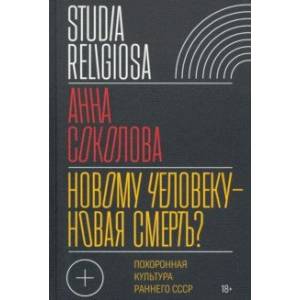Is a new death to a new person? Funeral culture of the early USSR
Please sign in so that we can notify you about a reply
The history of the USSR is often measured by dozens and hundreds of millions of tragic and violent deaths - from hunger, repressions, wars, as well as catastrophic costs of the social and economic policy of the Soviet regime. But a huge number of victims of the Soviet experiment were surrounded by even more immense death: we are talking about millions and millions of people who died from old age, illness and accidents. The book of historian and anthropologist Anna Sokolova is an analysis of state policy regarding death and burial, as well as bizarre metamorphoses of funeral culture in large cities of the USSR. This topic has long remained in the shadow of research on political repressions and wars, as well as work on traditional rural funeral culture. If these aspects of Soviet mormalness are studied well, then the question of what was in the material and symbolic dimensions the death and the funeral of the ordinary Soviet city dweller was studied. Meanwhile, he is very important for understanding who (or was supposed to become) the “new Soviet man”, proclaimed by the revolution. An analysis of transformations in the field of funeral culture sheds light on another question: was the experience of radical reforming society in the USSR absolutely unique or, despite all its radicalism, it was part of a large -scale modernization transition to industrial societies? Anna Sokolova is a candidate of historical sciences, a researcher at the Institute of Ethnology and Anthropology of the Russian Academy of Sciences, a teacher of the program “History of Soviet Civilization” by MVSHSEN
Author:
Author:Anna Sokolova
Cover:
Cover:Hard
Category:
- Category:Arts & Photography
- Category:Reference books
Series:
Series: Studia Relygiosa
ISBN:
ISBN:978-5-4448-1723-0
No reviews found
